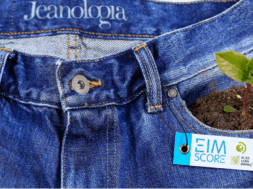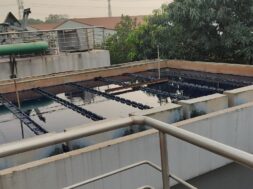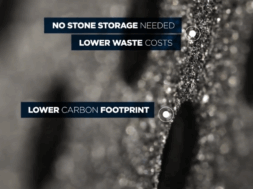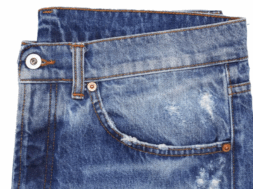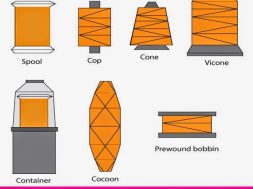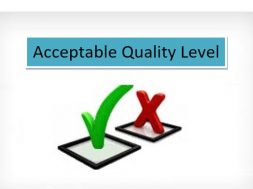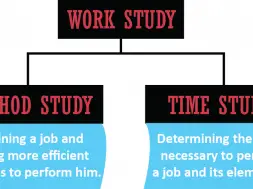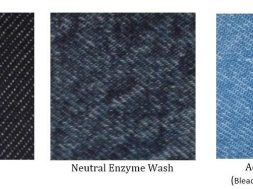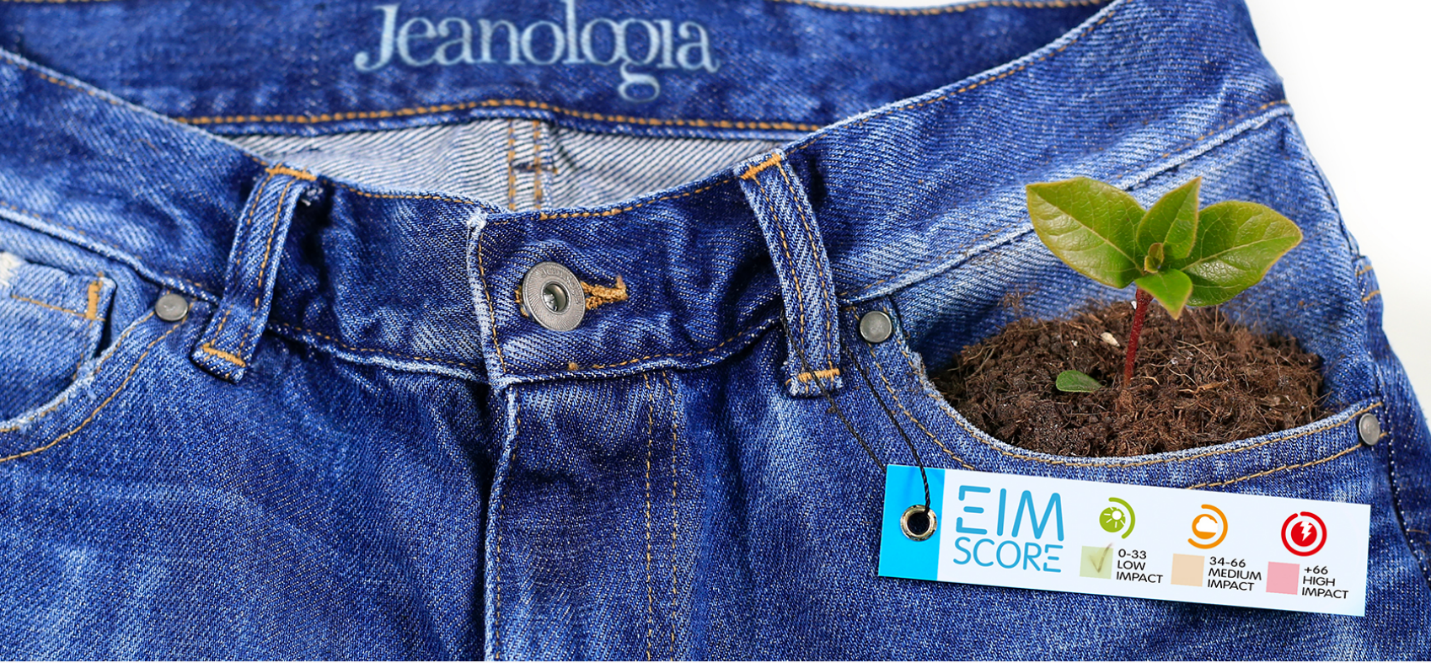
Sustainability in the Washing in Garment Industry : EIM Score
The garment washing industry stands at a crossroads, balancing the demands of fashion with the urgent need for sustainability. Traditional washing processes, especially in denim finishing, are notorious for their excessive water consumption, chemical usage, and energy demands, contributing significantly to environmental degradation. From stone washing to bleaching, these methods leave behind a trail of polluted water, toxic waste, and carbon emissions. However, the industry is undergoing a transformative shift, driven by innovative technologies and sustainable practices.
EIM Score: A Comprehensive Guide to Sustainability in Garment Washing
The textile and apparel industry is one of the largest consumers of water and energy while contributing significantly to environmental pollution. Garment finishing, especially in denim washing, involves excessive use of water, chemicals, and energy, leading to a substantial environmental footprint. To address these challenges, Jeanologia, a Spanish company specializing in sustainable textile solutions, developed the EIM (Environmental Impact Measurement) Score. This tool helps brands and manufacturers assess, monitor, and improve their environmental impact in garment finishing processes.
What is EIM Score?
The EIM Score (Environmental Impact Measurement Score) is a self-assessment tool designed to quantify and analyze the environmental impact of garment finishing processes. The tool evaluates four key sustainability parameters:
- Water Consumption – The total amount of water used per garment.
- Energy Consumption – The energy required during finishing operations
- Chemical Impact – The type and quantity of chemicals used.
- Worker Health & Safety – The potential risk factors in manual and chemical operations.
The EIM Score assigns a numerical value to each process, classifying them into Low (Green), Medium (Orange), and High (Red) Impact categories.
– Green (Low Impact) – Sustainable, efficient practices are followed.
– Orange (Medium Impact) – Moderate environmental impact with room for improvement.
– Red (High Impact) – Excessive use of water, energy, and chemicals, requiring urgent corrective action.
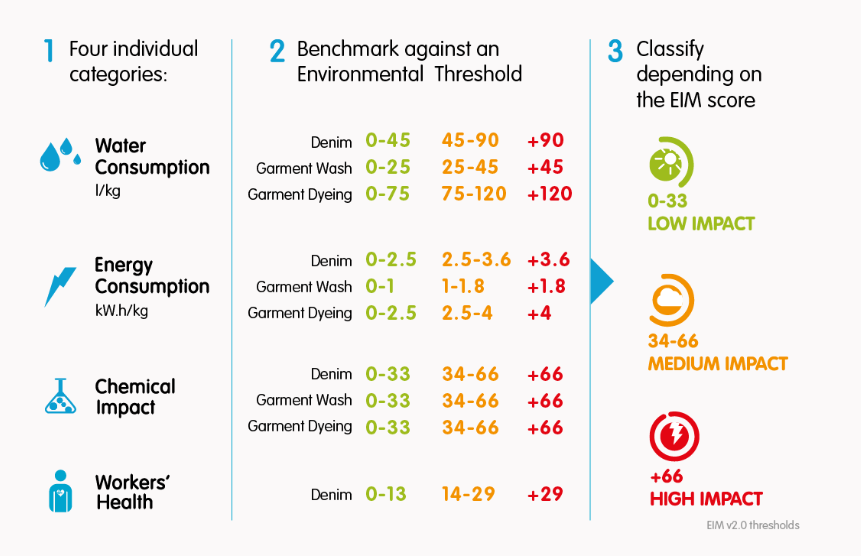
Why is EIM Score Important?
1 . Sustainability & Environmental Protection : The textile industry is a significant polluter, with garment washing processes consuming large volumes of water and chemicals. The EIM Score helps companies reduce their environmental footprint by monitoring and optimizing their washing processes.
2 . Regulatory Compliance : Many countries and international organizations have strict environmental regulations. EIM Score assists brands in ensuring compliance with sustainable production standards such as ZDHC (Zero Discharge of Hazardous Chemicals) and OEKO-TEX certification.
3 . Transparency and Consumer Trust : Consumers today are more environmentally conscious and prefer brands that promote sustainability and ethical production. EIM Score increases supply chain transparency, enabling brands to showcase their commitment to green practices.
4 . Cost Efficiency : Reducing water, energy, and chemical use not only benefits the environment but also lowers production costs. The EIM Score provides insights into how manufacturers can optimize resources and save operational expenses.
5 . Industry Recognition and Competitive Advantage : Many global fashion brands like Levi’s, H&M, GAP, and Inditex require their suppliers to follow EIM standards. Companies using the EIM Score gain a competitive advantage and increase business opportunities.
Which Industries Use EIM Score?
EIM Score is widely used in the textile and apparel industry, particularly in garment finishing and washing processes.
The primary users include:
- Denim & Jeans Manufacturing – The most common industry utilizing EIM Score due to the high environmental impact of denim washing.
- Garment Washing & Finishing Units – Factories specializing in garment dyeing, bleaching, and other finishing processes.
- Fashion Brands & Retailers – Global brands use EIM to ensure their supply chain meets sustainability standards.
- Textile Sustainability Consultants – Organizations advising textile manufacturers on improving environmental impact.
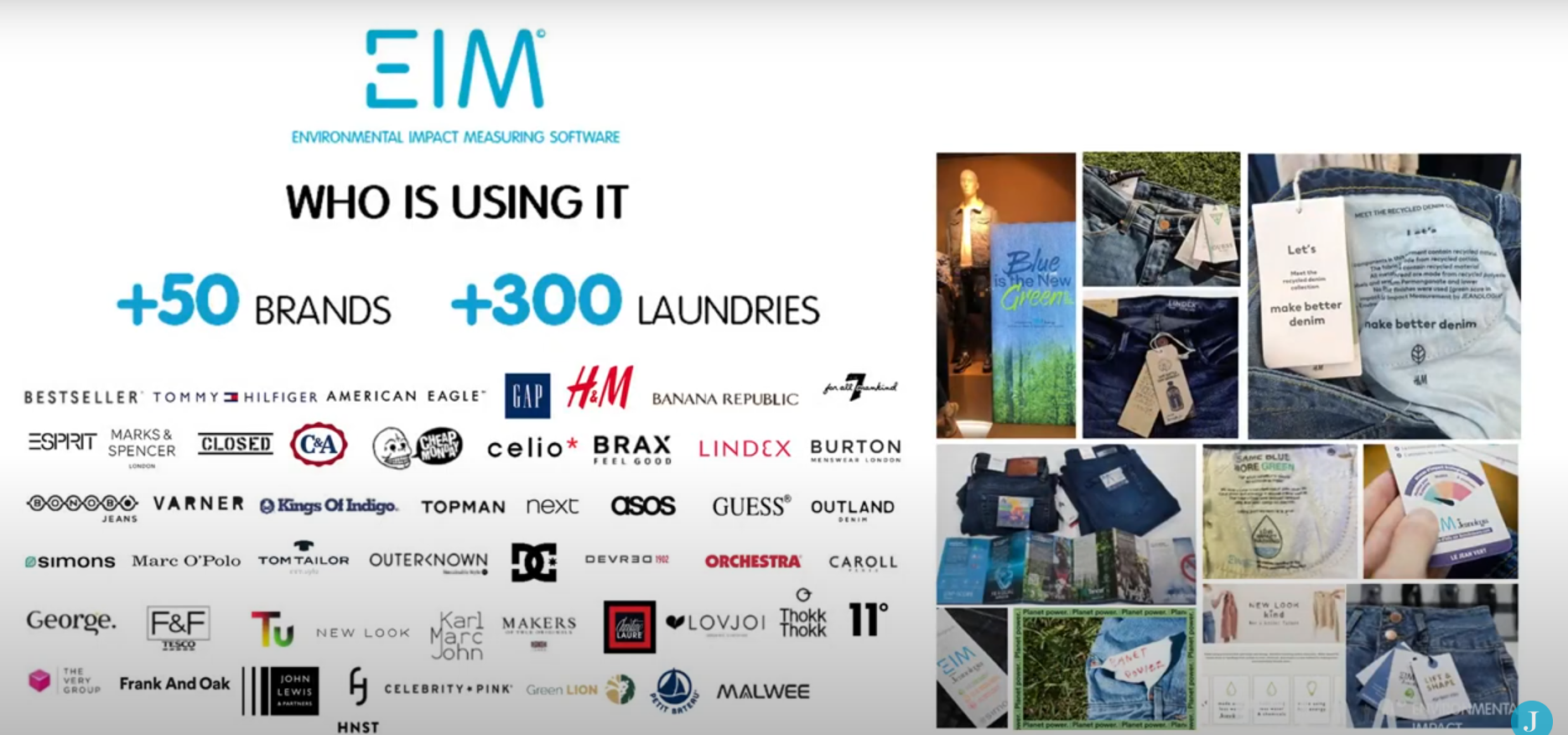
How Does EIM Score Work?
Step 1: Data Collection
The first step in calculating the EIM Score involves collecting data from the garment finishing process, including:
- Water and energy consumption per garment batch.
- Type and quantity of chemicals used.
- Manual operations and worker safety risks.
Step 2: Calculation of Impact
The EIM software then evaluates the data against predefined benchmarks for sustainability. It uses a scoring system to determine the environmental impact of each parameter.
Step 3: Classification into Impact Categories
Once the calculations are completed, the process is classified into one of the three impact categories:
- Green (Low Impact) – Best practices with minimal environmental impact.
- Orange (Medium Impact) – Some improvements are needed.
- Red (High Impact) – High environmental footprint requiring immediate action.
Step 4: Generating Reports & Recommendations
The tool generates reports that provide detailed insights into:
- Overall sustainability performance.
- Key areas of environmental concern.
- Recommended strategies to reduce impact.
Step 5: Implementation of Sustainable Practices
Based on the EIM Score, manufacturers can adopt eco-friendly technologies such as:
- Laser & Ozone Washing – Reducing water and chemical use.
- Nanobubble Technology – Cutting water consumption in washing processes.
- E-flow Systems – Minimizing chemical waste.
Step 6: Continuous Monitoring & Improvement
To maintain sustainability, companies must regularly assess their EIM Score and make improvements based on updated industry best practices.
(123)
